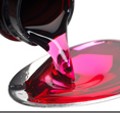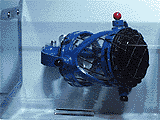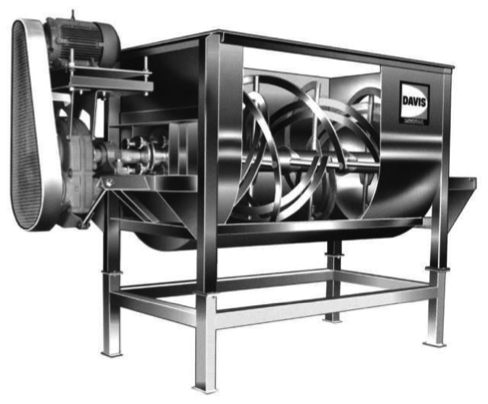The overall processes to develop the three types of syrups, namely solutions, suspensions, and emulsions, are quite similar, so the general process will be described below, and differences pointed out as needed. In all cases, the Active Pharmaceutical Ingredient, API, is mixed with sweeteners, water, flavors, and other inactive ingredients, and then packaged into bottles and prepared for shipping.
This module describes the production equipment used in the syrup manufacturing process. The Quality Control module describes additional equipment used to monitor quality parameters during this process.
Pharmaceuticals Process Map
Preparation of Ingredients
The primary step in manufacturing oral syrups is the preparation of the necessary ingredients in the correct forms prior to mixing. Oral syrups are composed of purified water, sweeteners, the API, and any formula-specific additives such as flavoring and thickeners. The sweetener is generally a solid crystal, which must be mixed and heated with purified water to form the liquid syrup. The sugar crystals and water are delivered to a mixing vessel using a vacuum system. Hot steam and rotors and/or agitators are then used to heat and mix the two ingredients until a uniformly mixed sugar syrup is formed. The necessary amounts of API and other additives are then measured in the subsequent step.
Mixing
The second step in producing oral syrups is combining the API, flavors, and other inactive ingredients with sweeteners and water. The order in which the ingredients are added to the batch is dependent on the specific recipe and process used. In general, the sweetener-water solution is prepared first, as these two ingredients comprise the bulk of the product and serve as a foundation for the addition of the other ingredients. The API and additives are generally solids and are either added manually by plant workers or through a system of vacuum pumps and solid-state blenders, depending on the size and scale of the process. For industrial-scale processes, powdered ingredients are often hydrated in order to make transfer and movement more efficient.
After adding all of the ingredients, the material is allowed to mix until all of the components are distributed uniformly. For low-viscosity solutions, gentle mixing is generally sufficient in helping the ingredients dissolve into the water. Emulsions will typically require high shear mixing to force the water and oil phases to mix properly. Suspensions have different requirements for mixing depending on the specific formulation. Occasionally, additional heat is supplied to help the sweeteners dissolve more easily. Higher temperatures are often used in order to prevent crystallization of the sweeteners inside the mixers and transfer tubes, which would cause clogging and cause the proportions of the ingredients to deviate from the recipe.
Commonly used mixers include tumblers and ribbon mixers. Tumblers are used for their simplicity and ability to operate in batch operations, allowing for more effective quality control. High-quality control coupled with gentle mixing cycles is highly sought after in the pharmaceutical industry. When high shear mixing is required, ribbon mixers are often used for their ability to scrape the outside walls and induce mixing of multiple phases.
Filtration
After the syrup has been deemed to be fully mixed and prepared, the product mixture must be filtered. The syrup is declared complete when the ending product is smooth, homogeneous, at the correct viscosity, and lacks any solid particulates. A standard liquid-permitting filter is generally used to catch any unwanted solid contaminants.
Packaging
Once the mixing is complete, the oral syrups can be pumped into bottles and sealed for distribution. Typically plastic bottles are used as containers for safety reasons. Pistons are inserted into the bottle and the syrup is pumped into the bottle gently to prevent splashing. After the bottles are filled, a plastic and aluminum seal is added to prevent tampering, the cap is added, and an external seal may also be attached. Since syrups are ingested into the body, sterilization is not required, as the digestive system is capable of handling most microbes.
After packaging, pharmaceutical syrups are tested against product specifications. The Quality Control module describes equipment relevant to this testing process.
Acknowledgements
- GEA Process Engineering Inc., Columbia, MD
- Glen Mills, Inc., Clifton, NJ
- H.C. Davis Sons Manufacturing Co., Inc., Bonner Springs, KS
References
- Bennett, Bill, and Cole, Graham. Pharmaceutical Production: An Engineering Guide. United Kingdom: The Institution of Chemical Engineers, 2002. Print.
- Niazi, Sarfaraz K. Handbook of Pharmaceutical Formulations. Vol. 2. CRC LLC, 2004. Print.
- Prism Pharma Machinery “Process.” Web.
- Yuan, Y., Pfizer Inc., personal communications, 2017.
Developers
- James Rivard
- Howard Hsu




